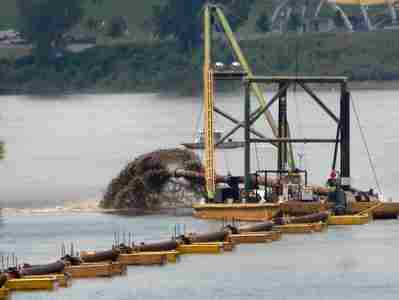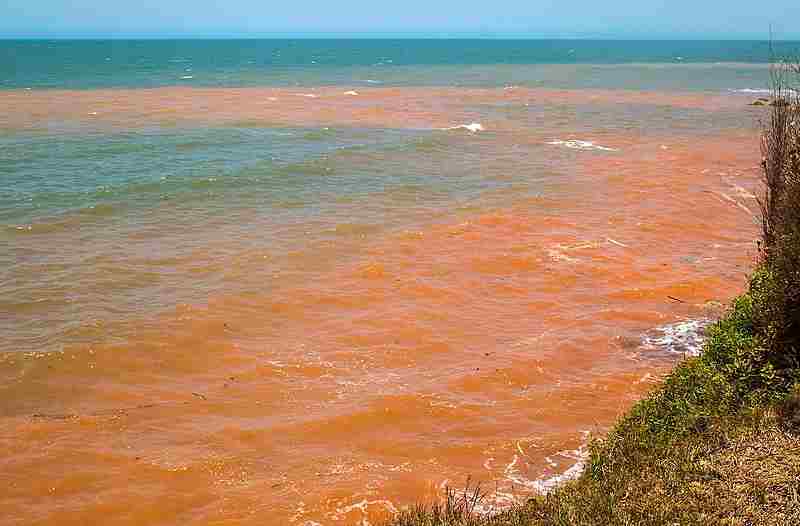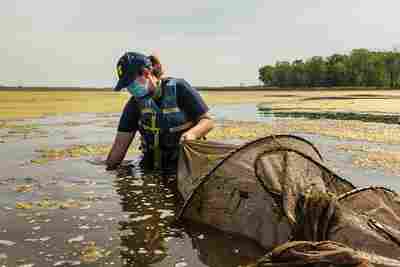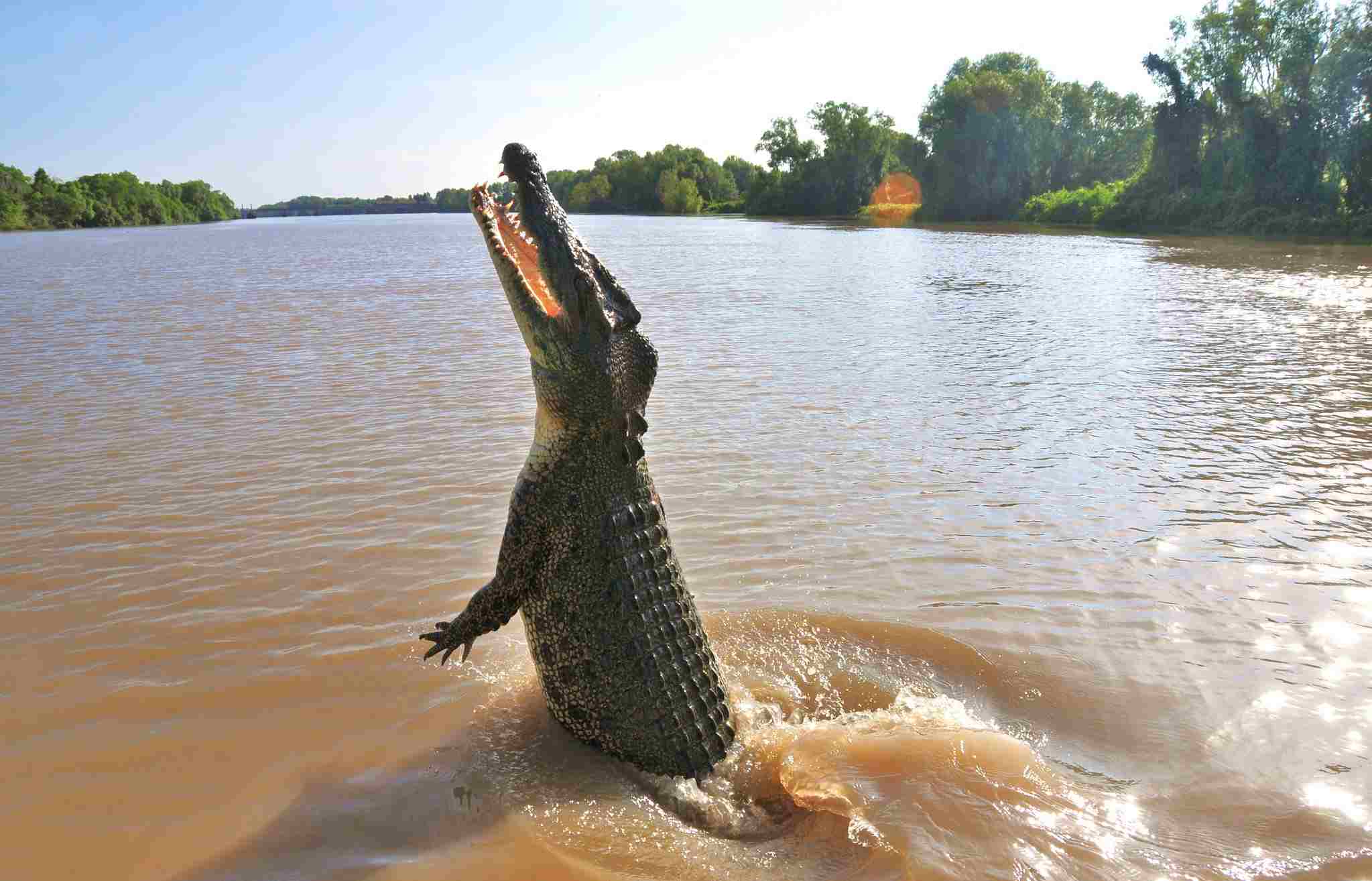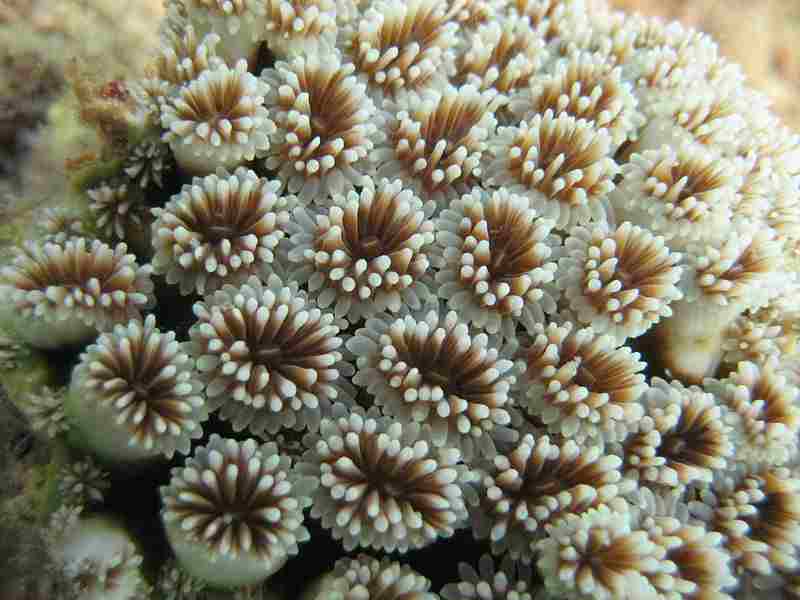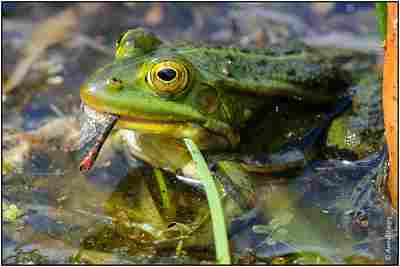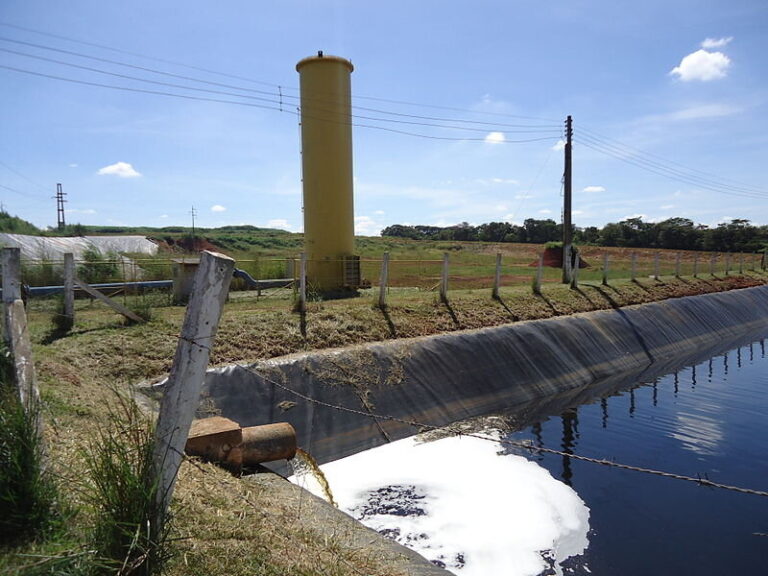9 Human Impacts on Estuaries Discussed
Human impacts on estuaries are; pollution, industrial land conversion, water loss, recreational pressures, sedimentary filling, damming, agriculture-induced erosion, flooding from urban drainages, and land reclamation for human settlement.
This article discusses human impacts on estuaries, as follows;
1). Pollution: One of the Human Impacts On Estuaries
Pollution is a notable, human-driven environmental impact on estuaries, with various mechanisms and far-reaching consequences.
Estuaries, which can be described as the meeting points of freshwater ecosystems like rivers and saltwater/marine ecosystems, are vital habitats that support diverse forms of plant and animal life. Unfortunately, these ecosystems are highly susceptible to pollution, especially in the form of nutrients, chemicals, and other contaminants.
This section addressed the mechanisms and consequences of pollution in estuaries.
Mechanisms of Pollution in Estuaries
Pollution in estuaries may occur through mechanisms such as nutrient runoff, chemical contaminant influx, and heavy metal accumulation.
One major form of pollution in estuaries is nutrient runoff. Nutrients like phosphorus and nitrogen, mainly from agricultural runoff and sewage discharges, may enter estuarine waters. These excess nutrients contribute to eutrophication, a process in which excessive autotroph growth occurs. This can result in algal blooms that consume oxygen during their biodegradation, thereby leading to oxygen depletion.

Various manmade chemicals, such as herbicides, pesticides, and industrial chemicals may also find their way into estuaries. These chemicals can be leached from agricultural lands, or transported in industrial discharges, and stormwater runoff, ultimately affecting the water quality and the aquatic organisms within the estuary.
Substances like lead and mercury, often associated with industrial processes and runoff from urban areas, can accumulate in estuaries. These heavy metals pose a notable threat to both the natural ecosystem and the health of adjacent human populations, when they make their way into the food chain.
Consequences of Pollution in Estuaries
In estuaries, the concept of environmental degradation with respect to pollution can be discussed within various contexts, including eutrophication, aquatic toxicity, habitat destruction, thermal pollution, and microplastic pollution.
As stated earlier, nutrient pollution triggers eutrophication, which in turn leads to an imbalance in the estuarine ecosystem. Algal blooms obstruct light energy from the sun, thereby affecting submerged aquatic vegetation and establishing oxygen-depleted "dead zones." This dynamic harms fish alongside other aquatic organisms that rely on oxygen-rich waters.
The occurrence of toxic substances like heavy metals, herbicides, and pesticides can be very lethal to estuarine organisms. These contaminants can accumulate in the tissues of fish and mollusks, posing health risks to both wildlife and the human populations that consume them.
Ultimately, pollution contributes to habitat destruction in estuaries. The overload of sediments and chemical contaminants can smother and toxify critical habitats like seagrass beds, oyster reefs, and salt marshes, disrupting the equilibrium and productivity of the ecosystem.
Human activities such as constructing water dams in river basins and installing/operating power plants, often release warm water into estuaries. This thermal pollution can alter the natural temperature and circulation trends of estuarine waters, thereby impacting the distribution of species and disrupting the entire ecosystem.
Microplastics, which originate from various sources including urban and industrial waste-outflows, also affect estuaries. These tiny plastic particles can enter the aquatic food chain, harming estuarine species, and potentially posing health risks to humans who consume seafood from these estuaries.
The discharge of sewage waste introduces pathogens like viruses, bacteria, protozoans, and helminths into estuaries. Like inorganic pollutants, these pathogens can pose health risks to both aquatic life and humans who come into contact with polluted waters.
2). Industrial Land Conversion
Industrial land conversion is a prominent impact of human activities on estuaries, with significant implications for these aquatic ecosystems.
This process involves the deliberate transformation of estuarine areas, particularly wetlands, into industrial land for various commercial and manufacturing purposes. An exploration of the mechanisms and consequences of industrial land conversion in estuaries, is provided here.
Mechanisms of Industrial Land Conversion
Industrial land conversion occurs through various mechanisms including; filling, reclamation, and vegetation expansion.
One of the main mechanisms of industrial land conversion in estuaries is through filling and land reclamation.
This process entails infilling estuarine areas with soil, rocks, or other granular materials, thereby effectively converting wetlands and open water zones into solid ground suitable for industrial, commercial, or residential development. Filling is commonly employed to create land for factories, ports, warehouses, and other industrial facilities.
The expansion of estuarine vegetation is often required in order to prepare the land for industrial use. This may involve clearing existing vegetation and modifying the landscape to accommodate buildings, industrial machinery, and transportation networks, thereby altering the estuarine terrain.
Consequences of Industrial Land Conversion in Estuaries
In estuaries, land conversion leads to consequences like; habitat loss, altered hydrology, water pollution and quality decline, loss of ecosystem services, and various socioeconomic impacts.
One of the most significant consequences of industrial land conversion in estuaries is the loss of critical estuarine habitats.
Wetlands and marshes serve as vital sites for breeding, foraging, sheltering grounds, for numerous species, including migratory birds and native marine life. Converting these areas into industrial land therefore disrupts such habitats, and leads to a decline in biodiversity/species richness, as well as the potential loss of threatened or endangered species.
Industrial land conversion can disrupt the natural hydrology of estuaries. Filling and construction can lead to alterations in water flow patterns, which may impact sediment deposition, regional soil erosion, and tidal energy dynamics. These changes can have cascading effects on the entire estuarine ecosystem and its processes, including the distribution of nutrients and sediment transport.
The runoff from industrial areas often contains pollutants, including heavy metals, anthropogenic dissolved chemicals, and industrial waste. When these pollutants enter into estuarine waters, they can degrade water quality and significantly harm aquatic life. This can lead to oxygen depletion and toxic contamination, with the accumulation of pollutants in the estuarine food chain.
Estuaries provide important ecosystem services, such as water purification, natural flood regulation, and recreational opportunities. Industrial land conversion obviously diminishes the capacity of estuaries to provide these services, potentially increasing the risk of hazards like flooding, while reducing water quality, and limiting opportunities for recreation and tourism.
While industrial land conversion may offer economic benefits in the form of job creation and industrial development, it also carries long-term risks. Deterioration of estuarine ecosystems can be harmful to fisheries, tourism schemes, and property values, impacting the local economy and the well-being of communities that depend on these estuaries.
3). Water Loss: One of the Human Impacts on Estuaries
Water loss in estuaries is a human-induced phenomenon that often disrupts the delicate balance of biotic and abiotic factors in these ecosystems.
Estuaries rely on a consistent inflow of water to maintain their ecological vitality. When humans alter the natural flow of water, whether by extraction, diversion, or other activities, it can have profound consequences for these critical coastal environments. The following subsections explore the mechanisms and consequences of water loss in estuaries.
Mechanisms of Water Loss in Estuaries
Two prominent, anthropogenic mechanisms of water loss in estuaries are; water extraction and diversion for hydroelectric power generation.
Human endeavors, such as agriculture, industry, and urban development, often require large quantities of freshwater. In estuarine environments, water is frequently extracted from rivers and groundwater for irrigation, industrial processes, and municipal use. This frequent removal of freshwater disrupts the natural influx into estuaries.
The construction of dams and hydro energy facilities along rivers leading to estuaries can lead to water diversion. These structures divert water for electricity generation, thereby altering the quantity and regularity of freshwater input into estuaries.

Consequences of Water Loss in Estuaries
Consequences of water loss in estuaries include; salinity intrusion, altered nutrient transport, habitat loss, fishery degradation, erosion and sedimentation.
Reduced freshwater flow into estuaries can lead to increased salinity levels in estuarine waters. This salinity increase can in turn harm estuarine flora and fauna which are adapted to specific salinity ranges. It can also disrupt the numerical and functional balance of species, favoring salt-tolerant organisms over less versatile groups.
Natural freshwater flow usually carries essential nutrients into estuaries, which support primary productivity and sustain the aquatic food web. Water loss disrupts this nutrient transport process, potentially leading to nutrient imbalances and reduced productivity within the ecosystem.
Water loss can lead to the disappearance of vital estuarine habitats, such as marshes, mudflats and wetlands. These habitats are critical for the long-term survival of several species, including migratory birds, fish, and some invertebrates. Habitat destruction can lead to declining biodiversity and reduced fishery yields.
Estuaries are often important nurseries for fish and some other aquatic species. Water loss can negatively influence these nursery grounds, impacting natural fish populations as well as commercial fisheries that rely on estuarine resources.
Reduced freshwater flow can affect the transport of sediments within estuaries. This can lead to erosion in some areas and sediment accumulation in others, altering the physical characteristics of the estuary and the various habitats it provides.
Lastly, estuarine water loss can have economic and recreational consequences. Reduced freshwater flow may affect tourism, boating, and recreational activities that depend on healthy estuarine ecosystems.
*Additional Notes on Water Loss from Estuaries
Humans cause water loss in estuaries through activities such as water extraction for agriculture, industry, and municipal use. Additionally, the construction of dams and associated hydroelectric power facilities, diverts water away from estuaries, thereby reducing their freshwater inflow.
The consequences of water loss in estuaries include saline intrusion, altered nutrient transport, habitat loss, impacts on fisheries, changes in sedimentation patterns, and economic and recreational implications. These consequences can disrupt estuarine ecosystems, harm biodiversity, and also impact human activities and industries that rely on these ecosystems.
4). Recreational Pressures
Recreational activities within and around estuaries can exert significant pressures on these sensitive coastal habitats.
As more people seek leisure and adventure in these natural areas, the cumulative impact of their recreational activities can lead to environmental degradation. Understanding the mechanisms and consequences of recreational pressures is an essential measure to strike a balance between human enjoyment and estuarine conservation.
Mechanisms of Recreational Pressures on Estuaries
Mechanisms of recreational pressure on estuarine habitats include activities, concepts and phenomena like; boating, fishing, tourism, visitor traffic, and recreational structures.
Recreational boating, jet skiing, and other watercraft activities within estuaries can disturb the water and shoreline habitats. The wake and propeller action from boats, for example, can erode shorelines, damage seagrass beds, and disrupt aquatic life.
Fishing is a popular recreational activity in estuaries, but it can lead to overfishing and may cause harm to sensitive species. Overfishing can disrupt the natural balance of the estuarine ecosystem and deplete fish stocks.
Tourists and visitors can put pressure on estuarine ecosystems while traversing the region, especially in densely visited areas. The increased traffic from such tourists can lead to habitat destruction, disturbance to nesting birds, and littering.
Lastly, the construction of recreational facilities, such as piers, docks, and marinas, can disrupt natural shoreline habitats. These structures may obstruct the movement of aquatic species and alter sedimentation patterns.
Consequences of Recreational Pressures on Estuaries
In estuarine regions, recreational pressures may lead to habitat degradation, species disturbance, pollution, erosion and shoreline damage.
Recreational activities can lead to habitat degradation in estuaries. Damage to seagrass beds, mudflats, and wetlands can harm the organisms that depend on these habitats for foraging, breeding, and shelter.
The noise and activity which are associated with recreational boating and watercraft use, can disturb wildlife, including birds, dolphins, and other estuarine species. This can disrupt natural behaviors, such as nesting and foraging, and may lead to population declines.
Also, recreational activities can introduce pollutants, such as grease, fuel, and solid waste, into estuarine waters. These pollutants can harm aquatic life, degrade water quality, and contribute to the accumulation of toxic microplastics.
Overfishing resulting from recreational activities can deplete native fish populations in estuaries. This not only affects the sustainability of recreational fishing itself, but also has consequences for commercial fisheries and the entire estuarine food web.
As stated earlier, the propeller and wake action of boats can cause severe erosion along estuarine shorelines. This can in turn result in the loss of critical habitat for shorebirds and other aquatic species.
The cumulative impact of multiple recreational activities can lead to significant stress on estuarine ecosystems, especially in areas with high visitor traffic. This can result in long-term ecological damage and a reduction in estuarine resilience.
*Additional Notes and Reiterations, on the Impact of Recreational Activities on Estuaries
The mechanisms of recreational pressures on estuaries include boating and watercraft use, fishing, tourism and visitor traffic, as well as the construction of recreational structures like piers and marinas.
The consequences of recreational pressures on estuaries include habitat degradation, species disturbance, pollution, overfishing, shoreline damage, and the cumulative impact of these activities, which can lead to long-term ecological damage and reduced estuarine resilience.
5). Sedimentary Filling: One of the Human Impacts on Estuaries
Sedimentary filling is a significant concept, with regards to its links to human-induced impacts that affects the ecological wellbeing and functioning of estuaries.
Estuaries are characterized by their dynamic sedimentary processes. However, human activities can alter these natural processes, and lead to excessive sediment deposition within these ecosystems. The mechanisms and consequences of sedimentary filling are crucial factors that must be understood for the conservation and management of estuaries.
Mechanisms of Sedimentary Filling in Estuaries
Mechanisms and phenomena associated with sedimentary filling of estuaries include; land development, agricultural practices, dredging and channelization, as well as urbanization.
The construction of roads, buildings, and other infrastructure near estuaries can result in increased sediment runoff. Erosion from construction sites and the disruption of natural drainage patterns can contribute to sediments being transported into the estuarine watershed areas.
Agriculture and its related activities, such as tilling and deforestation, can expose soil to erosion, ultimately leading to sediment-laden runoff into estuaries. The use of fertilizers and pesticides on farm lands can further exacerbate the issue by altering substrate composition and nutrient levels.
In some cases, estuaries are subject to dredging and channelization for navigation and various developmental purposes. These activities disrupt natural sediment dynamics, leading to the removal of sediments from some areas and their deposition in others.
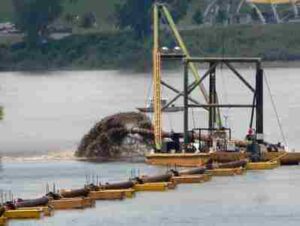
Urbanization in estuarine regions can increase the areal coverage impervious surfaces, such as roads and parking lots. This leads to increased surface runoff during rainfall events, which carries large quantities of sediment and pollutants into estuaries.
Consequences of Sedimentary Filling in Estuaries
Sediment influx into estuaries can lead to; habitat degradation, reduced water clarity, altered tidal dynamics, fishery degradation, reduced resilience to sea-level rise, and water quality reduction.
Excessive sediment deposition can smother critical estuarine habitats like salt marshes, oyster reefs, and seagrass beds. This results in habitat degradation and loss, influencing the organisms that depend on these areas for shelter, breeding, and foraging.
Sediment-laden water reduces water clarity in estuaries. This can have detrimental impacts on photosynthetic organisms like algae and seagrasses, which require sufficient light for growth. Reduced water clarity can also inhibit visual predators like fish and birds.
The natural tidal dynamics within estuaries can be altered by sedimentary filling, which in turn affects the distribution of particulate materials and nutrients. This can disrupt the natural processes of sediment erosion and deposition, which are critical for the long-term maintenance of estuarine ecosystems.
Accumulation of sediment can also have adverse effects on estuarine fisheries. It can smother fish eggs, alter the benthic environment, and disrupt the natural feeding habits of fish, leading to low productivity and population declines.
Estuaries often serve as buffer zones against sea-level rise and storm surges. Sedimentary filling reduces the ability of these estuaries to absorb and dissipate such hydrological forces, making adjacent coastal areas more vulnerable to severe flooding.
Lastly, the sediments transported by runoff often contain pollutants and nutrients. These contaminants can infiltrate estuaries, where they may lead to water quality issues and potential ecosystem disruption.
*Additional Notes and Reiterations on Anthropogenic Sediment Influx in Estuaries
The mechanisms of sedimentary filling in estuaries include land development, agricultural practices, dredging and channelization, and urbanization, which culminate in increased sediment runoff and disruption of natural sediment dynamics.
Consequences of sedimentary filling in estuaries include habitat degradation, reduced water clarity, altered tidal dynamics, impacts on fisheries, reduced resilience to sea-level rise, and water quality impacts.
These consequences collectively threaten the ecological health of estuaries and the services which they provide to both natural ecosystems and human communities.
6). Damming
Damming, which is the construction of dams on rivers (that feed into estuaries), is a notable human-driven phenomenon that can have significant consequences for estuarine ecosystems.
Dams alter the natural flow of freshwater into estuaries, thereby disrupting the delicate balance of these environments. Discussions in this section highlight the mechanisms and consequences of damming, with respect to estuaries.
Mechanisms of Damming in Estuarine Ecosystems
Water-flow regulation and reservoir formation are the two mechanisms by which damming affects estuarine ecosystems.
The main mechanism of damming entails the construction of dams on rivers and streams that flow into estuaries. Dams are built to impound water for various purposes, including hydro-electricity generation, water supply, and flood control.
Dams regulate the flow of water, by capturing it during periods of high precipitation and releasing it during times of scarcity. This dynamic of regulation results in a significant alteration of natural flow patterns in rivers and, subsequently, in the estuaries they feed.
Dams also create reservoirs behind them, which can lead to the accumulation of sediments, altered sediment transport, and changes in water temperature and composition/quality. The impounded water can also become a source of thermal pollution as it is released from the dam.
Consequences of Damming for Estuaries
Damming affects estuaries in diverse ways which include; reduced freshwater inflow, altered sediment transport, erosion, habitat degradation, changes in water temperature, impacts on migratory species, economic and ecological consequences.
The most direct consequence of damming on estuaries is a reduction in the freshwater inflow. This can lead to salinity intrusion, as the balance between saltwater and freshwater is disrupted. Elevated salinity levels can harm estuarine flora and fauna that are adapted to specific salinity ranges.
Dams can trap sediments in reservoirs, thereby preventing them from reaching estuaries. This can lead to sediment starvation in downstream areas, affecting the natural sediment dynamics, which are critical for the maintenance of estuarine habitats.
Reduced sediment supply can result in erosion of estuarine shorelines and the degradation of critical habitats like marshes and mudflats. These habitats serve as breeding grounds, feeding areas, and sheltering spots for various estuarine species.
Dams can alter the temperature of the water released from reservoirs. Warm water discharge can affect the distribution of species, as some organisms are highly sensitive to temperature changes. This can lead to alterations in the estuarine food web and ecosystem composition.
Estuaries often serve as vital nurseries for fish and other aquatic organisms, many of which are migratory. Changes in freshwater flow can affect the availability of nursery habitats, impacting the growth and long-term survival of these species.
Lastly, damming can have economic and ecological repercussions. Reduced freshwater inflow can affect fisheries, agriculture, and tourism that depend on healthy estuaries. In addition, ecological imbalances can disrupt the entire estuarine ecosystem.
7). Agriculture-Induced Erosion: One of the Human Impacts on Estuaries
Agriculture-induced erosion is another impact of human activities on estuaries, with far-reaching implications for these ecosystems. As agriculture has a pivotal role to play in providing food and resources, it also poses unique challenges when it comes to land management and the control of soil erosion.
In estuarine regions, agricultural practices can lead to excessive sediment runoff, which adversely affects the ecological stability and productivity of these environments. This section delves into the mechanisms and consequences of agriculture-induced erosion in estuaries:
Mechanisms of Agriculture-Induced Erosion in Estuarine Environments
Clearing of vegetation, tillage, plowing, mono-cropping, and excessive use of fertilizers and pesticides, are all agricultural concepts related to erosive degradation in estuaries.
The expansion of agricultural land often involves clearing natural vegetation cover, such as forests and wetlands. This removal of protective vegetation exposes the soil to the impacts of erosional agents like wind and water.
Common agricultural practices like tillage and plowing can disrupt the natural structure of the soil. When the topsoil is loosened, it becomes more susceptible to erosion by wind and stormwater runoff.
The practice of planting a single crop species over large areas (mono-cropping) can also lead to the removal of protective vegetation and reduce the diversity of plant cover. This makes the soil more prone to erosion.
Also, the overuse of fertilizers and pesticides in agriculture can affect soil health and its ability to retain moisture. This makes the soil more vulnerable to erosion during rainfall events.
Consequences of Agriculture-Induced Erosion in Estuaries
Agriculture-induced erosion in estuarine zones is associated with consequences like sediment runoff, altered water quality, reduced light penetration, loss of biodiversity, and negative economic impacts.
Agriculture-induced erosion leads to the mobilization of soil particles, which are carried by runoff into estuaries. This sediment influx can smother some critical estuarine habitats, such as seagrass beds, resulting in habitat degradation.
The sediment-laden runoff from agricultural areas can introduce pollutants, such as pesticides and nutrients, into estuaries. These contaminants can reduce water quality, leading to eutrophication, which can harm aquatic life and disrupt the estuarine food web.
Presence of suspended sediments in estuarine waters reduces light penetration, which can negatively impact the growth of submerged aquatic vegetation, including seagrasses. These plants provide essential habitat as well as food for many estuarine species.
Agriculture-induced erosion can lead to the loss of some vital estuarine habitats. The destruction of salt marshes and mudflats results in habitat loss for various species, including birds, fish, and several invertebrates.
The impacts of agriculture-induced erosion on estuaries can have measurable economic repercussions. Reduced water quality and habitat loss can harm fisheries, tourism, as well as property values in estuarine areas.
Lastly, healthy estuaries serve as buffer zones against sea-level rise and storm surges. Agriculture-induced erosion weakens the ability of estuaries to absorb and dissipate these forces, thereby making adjacent coastal areas more susceptible to climate change impacts.
8). Flooding from Urban Drainages
The urban ecosystem with its sprawling infrastructure and impervious surfaces, can significantly alter the natural hydrology of estuarine areas.
Flooding from urban drainages is a human-induced impact that affects estuaries, with wide-ranging implications for these coastal zones, in many cases. This phenomenon occurs when stormwater runoff from urban areas flows into estuaries during heavy rainfall events.
Subsections below explore the mechanisms and consequences of flooding from urban drainages in estuaries.
Mechanisms of Estuarine Flooding from Urban Drainages
Estuarine flooding from urban drainages is driven by factors like the presence of impervious surfaces, stormwater drainage systems, and high volume runoff.
Urban development involves the creation of impervious surfaces such as roads, parking lots, and rooftops. These surfaces prevent rainwater from being absorbed by the ground/soil, causing it to rather flow rapidly into storm drains.
Urban areas are equipped with stormwater drainage systems designed to collect and channel rainwater efficiently. These systems transport large volumes of stormwater away from urban areas and discharge it directly into adjacent water bodies, including estuaries.
Urbanization increases the volume and velocity of stormwater runoff. The concentration of runoff can overwhelm natural drainage systems, causing flash floods that carry pollutants, sediments, and other kinds of debris into estuaries.

Consequences of Flooding from Urban Drainages, for Estuaries
Urban flooding affects estuaries by facilitating sedimentation, pollution, erosion, habitat degradation, salinity alteration, water quality impacts, disruption of benthic communities, human health and safety risks.
The rapid flow of stormwater runoff transports sediments, chemicals, oil, heavy metals, and other pollutants from urban surfaces into estuaries. These contaminants degrade water quality, harm aquatic life, and disrupt the estuarine ecosystem.
Force exerted by stormwater runoff can lead to erosion along estuarine shorelines, destroying critical habitats such as mudflats and salt marshes. These habitats serve as breeding and feeding grounds for numerous estuarine organisms.
The influx of freshwater from stormwater runoff can temporarily reduce salinity levels in estuaries. This alteration in salinity can negatively impact estuarine organisms which are adapted to specific salinity ranges.
Introduction of urban pollutants and excess nutrients from runoff can lead to water quality-related environmental issues in estuaries. These issues include eutrophication, harmful algal blooms, and oxygen depletion, all of which can be harmful to aquatic life.
The sediment influx and nutrient loading from urban drainages can alter the composition of benthic communities in estuaries. Changes in the availability of abiotic resources like oxygen and nutrients can impact the organisms that dwell on the estuarine floor.
Flooding from urban drainages can pose risks to human health and safety, especially in urban areas. It can cause property damage, disrupt transportation networks, and result in flooding-related fatalities.
Urbanization in estuarine regions can amplify the risk of storm surges. The rapid discharge of stormwater into estuaries during intense storm events can exacerbate flooding and increase the vulnerability of coastal communities to extreme weather events.
9). Land Reclamation for Human Settlement: One of the Human Impacts on Estuaries
Land reclamation for human settlement is a human-induced impact that affects many estuaries, with substantial consequences for both the environment and region coastal communities.
This practice involves altering estuarine areas, often through the addition of land or the modification of existing land, to create space for urban development and human habitation. The mechanisms and consequences of land reclamation in estuaries are important factors to understanding its impact on the entire coastal ecozone.
Mechanisms of Land Reclamation in Estuarine Areas
In estuarine areas, land reclamation is linked to phenomena and activities like; construction of dikes and levees, fill material and sediment placement, as well as infrastructure development.
Dikes and levees are both built to enclose areas of estuarine land, separating them from the natural flow of water. These structures are used to prevent tidal inundation and flooding, thereby supporting the establishment of human settlements on reclaimed land.
In order to raise the elevation of reclaimed land, fill material such as soil, sand, or concrete is deposited over the estuarine bottom. This creates a solid foundation for building infrastructure and supporting expansive human settlements.
Reclaimed land is often developed with roads, buildings, ports, and other urban infrastructure, turning estuarine areas into residential and commercial spaces.
Consequences of Land Reclamation for Estuaries
Outcomes associated with land reclamation in estuaries include habitat loss, alteration of regional hydrology, increased urbanization, water quality issues, erosion, sedimentation, flooding risk, and loss of ecosystem services.
Land reclamation involves the destruction of estuarine habitats, including marshes, mudflats, and wetlands. These habitats provide important breeding, foraging, and sheltering sites for numerous estuarine organic groups, and their loss can result in declining biodiversity.
Reclaimed land may alter natural water flow trends within estuaries. This can lead to changes in sediment deposition, tidal dynamics, and nutrient transport, which in turn disrupt the natural ecological balance.
Land reclamation often leads to the expansion of urban areas along estuaries. Urbanization in these areas can contribute to increased pollution, habitat degradation, and the introduction of non-native species, further impacting estuarine ecosystems.
Human settlements on reclaimed land can generate increased runoff of pollutants such as sewage, heavy metals, and industrial chemicals, into estuarine waters, thereby causing water quality issues that can be harmful to aquatic life.
The alteration of estuarine shorelines and sediment dynamics can result in increased erosion in some areas and sediment accumulation in others, which affect both the physical characteristics of the estuary and the habitats which it provides.
Land reclamation can increase the risk of severe flooding in coastal areas due to changes in natural water flow and elevated sea levels. This puts both human settlements and the entire estuarine environment at risk during extreme weather events.
Estuaries provide vital ecosystem services, such as water purification, flood control, and sustenance for fisheries. Land reclamation can reduce the capacity of estuaries to provide these essential services, impacting both local communities and the wider region.
Conclusion
Human impacts on estuaries include;
1. Pollution
2. Industrial Land Conversion
3. Water Loss
4. Recreational Pressures
5. Sedimentary Filling
6. Damming
7. Agriculture-Induced Erosion
8. Flooding from Urban Drainages
9. Land Reclamation for Human Settlement
